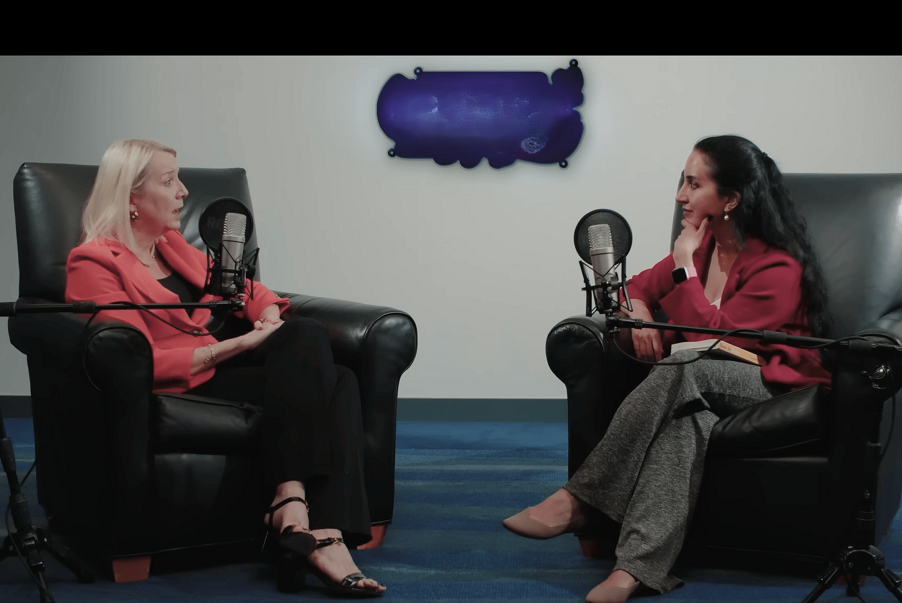You’ve spent decades being the responsible one. The disciplined saver. The person who maxes out their 401k, lives below their means, and actually understands what “tax-loss harvesting” means.
Then your financial planner looks you in the eye and says: “You’re not going to be able to spend what I think you can spend in retirement. I know you. It’s going to be a struggle.”
That’s exactly what happened to Christine Benz, Morningstar’s director of personal finance and retirement planning.
Even one of the country’s top retirement experts struggles with the psychological handcuffs of being “good with money.”
It’s a perfect illustration of how saving for retirement isn’t just about the numbers — it’s about identity.
Think about it. For decades, we build our identity around financial responsibility. We become the friend others turn to for money advice. We pride ourselves on our growing investment accounts. We get a little dopamine hit every time we see our net worth tick upward.
Then retirement arrives, and suddenly we’re supposed to flip a switch and become … spenders?!
It feels wrong. Unsettling. Like betraying the very habits and mindset that created financial security in the first place.
This mindset trap shows up everywhere. At financial seminars, Benz told me, some 80-something-year-old will proudly announce that he only spends 3 percent of his portfolio each year, regardless of the balance.
He’ll beam while saying this, completely missing the fact that he’s potentially sacrificing quality of life for the sake of maintaining his identity as a “good saver.”
This isn’t just about penny-pinching. It’s about the psychological grip that decades of saving can have on our minds.
We’ve spent 30+ years optimizing our lives around accumulation, and that mindset doesn’t easily let go.
The irony? This same dedication to saving that serves us so well during our working years can become our biggest obstacle in retirement.
Benz and I chatted about this at the Bogleheads conference in Minnesota; you can watch our interview on Youtube. During our conversation, she shared this real-world example:
After selling company stock and moving the money to a brokerage account, she found herself resistant to pulling funds out to pay the related tax bill – even though that’s exactly what she earmarked some of those funds for.
“We’re so used to just there being this one-way direction,” she explained, “paycheck into savings and investments, that the thought of the funds coming out of that account, that that balance would ever go lower, was very uncomfortable.”
So what do we do about this savings-identity crisis?
Here’s the wild thing:
Many of us could live in retirement for 30, 40, even 50 years.
If you retire at 45 or 55, or heck even at the “traditional” age of 65, it makes zero sense to plan to spend the exact same inflation-adjusted amount at age 95.
Our lives, interests, and needs evolve dramatically over decades. At 65, you’ll probably want to travel. At 95, you probably won’t.
Yet that’s essentially what we’re doing when we get locked into rigid spending rules like “never touch the principal” or “only spend 4 percent forever.”
Let’s get tactical about this. Here are three ways to break free from the super-saver trap:
#1: Create Spending “Buckets” (Not Budgets)
In our interview, Benz described this brilliant approach:
Instead of giving retirees an annual spending budget, create a “travel bucket” — then set a goal to deplete it within 10 years.
Why? Because data shows our spending naturally changes throughout retirement. We travel more in our 50s and 60s, less in our 80s. Then healthcare costs rise in our later years. One static fixed spending number makes zero sense.
This is especially crucial for those of us in our 20s and 30s planning early retirement. When you’re looking at a potential 50+ year retirement horizon, trying to use the same spending rules at age 85 that you used at age 35 is like trying to wear the same shoes you wore in middle school.
You’re a different person with different needs at different life stages.
I’d add to that: set a “fun stuff” spending goal in every decade of life.
Concerts, scuba, skiing: these activities hit different at 25 vs. 45 vs. 65, not only because you change, but because the world around you changes.
When I was in college, nobody had a smartphone at concerts. You could look across the crowd and see hands in the air, maybe lighters, but you never saw screens. That’s an era that will never again exist, and I’m glad I got to experience it when I did.
#2: Challenge the Scarcity Mindset
Having huge retirement savings but being afraid to spend any of it is like owning a fleet of jets but only allowing yourself to fly Spirit Airlines.
You’ve done all the hard work of acquiring the assets – now you’re letting an outdated mindset prevent you from using them.
Think about it: We spend decades mastering the art of NOT spending. We celebrate when our savings rate hits 50 percent, 60 percent, even 70 percent of our income.
We optimize our tax strategies, max out every tax-advantaged account, and househack our way to lower living costs.
Then suddenly we’re supposed to reverse all of that conditioning? No wonder we struggle.
Being prudent with our money is smart. Being paralyzed by it is not. The ultimate purpose of saving isn’t to have the biggest possible balance in our accounts when we die. It’s to give ourselves options and freedom while we’re alive.
Sometimes that means spending $50,000 in a year, sometimes $100,000, sometimes $150,000. The beauty of building wealth is having that flexibility.
Remember: You’re not “depleting” your life’s work when you spend. You’re completing the mission you set out to accomplish in the first place.
#3: Start Small
Can’t shake the savings habit? Fine. Start with one small spending upgrade.
Maybe it’s buying the fancy olive oil. Taking the nicer flight. Hiring the cleaning service so you can spend those hours on something you actually enjoy.
Build your “spending muscles” the same way you built your saving muscles — one small choice at a time.
Here’s the bottom line: Money is a tool, not a scorecard. Having the biggest portfolio when you die isn’t going to win you any prizes. In fact, it might mean you spent too many years saying “no” to experiences that could have made life richer (in the non-financial sense).
The real measure of financial success isn’t how much we can avoid spending. It’s how effectively we can deploy our money to create a life that makes us excited to get out of bed each morning.
Whether that’s funding a year of slow travel through Southeast Asia, taking those kiteboarding lessons you’ve always wanted, or yes — finally buying the fancy olive oil.
Money is fuel for living, not a high score to chase.



